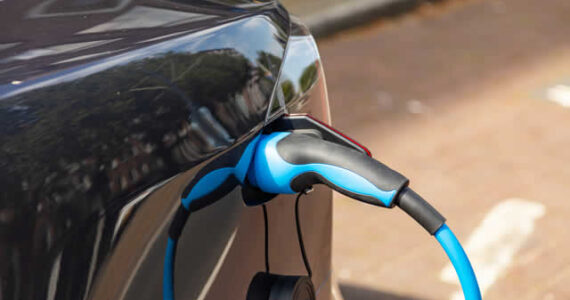The quiet hum of an electric car pulling away from a stoplight is becoming a familiar sound on our streets. More people are choosing electric vehicles (EVs) for their environmental benefits, lower running costs, and exciting performance.
If you’re thinking about joining them, you might feel a mix of excitement and uncertainty. What do you really need to know before making the switch? This guide will walk you through the essentials of EV ownership, from choosing the right car to keeping it running smoothly, so you can feel confident and prepared for the road ahead.
Essential Knowledge Before Buying
Making the decision to buy an EV is the first step. Next comes the fun part: figuring out which car is right for you. This involves looking at a few key factors that are unique to electric vehicles, such as how far they can go on a single charge and what financial perks are available.
Understanding these elements will help you select a model that fits your lifestyle and budget perfectly.
Battery Life and Range
One of the first questions people ask about EVs is, "How far can it go?" This is known as the car’s range, and it’s a crucial consideration. Think about your daily driving habits. Do you have a short commute, or do you regularly travel long distances?
Most modern EVs offer a range of 200 to 300 miles or more, which is plenty for typical daily use. However, factors like extreme weather, high speeds, and using the air conditioning can reduce this range.
It’s helpful to choose a car with a range that comfortably exceeds your daily needs to avoid "range anxiety," the fear of running out of power before you reach a charger.
EV Models and Features
The market for electric cars is expanding rapidly, offering a wide variety of models to suit different tastes and needs. You’ll find everything from compact city cars to spacious SUVs and high-performance sedans. As you compare models, look at features beyond just the range.
Consider the car’s charging speed, technology package, and cargo space. Some EVs offer advanced driver-assistance systems, while others focus on a minimalist design. Taking the time to test drive a few different models will give you a feel for what you like best.
Purchase Incentives and Tax Credits
To encourage the adoption of cleaner transportation, governments often offer financial rewards for buying an electric car. These electric vehicle incentives can significantly lower the upfront cost. Federal tax credits can save you thousands of dollars, and many states and even local utility companies offer their own rebates and perks.
These programs change over time, so it’s important to research the current incentives available in your area before you buy. These savings can make an EV much more affordable than you might think.
Your Home Charging Setup
One of the biggest lifestyle changes when switching to an EV is refueling at home instead of at a gas station. Waking up to a "full tank" every morning is a wonderful convenience. Setting up home EV charging is a straightforward process, but it requires understanding the different types of chargers and what your home’s electrical system can support.
Types of Home Chargers
There are two main levels of home chargers. A Level 1 charger is the simplest option; it plugs directly into a standard 120-volt wall outlet, the same kind you use for your phone or lamp. While it doesn’t require any special installation, it’s also the slowest method, adding only about 3 to 5 miles of range per hour.
A Level 2 charger is the more common and practical choice for most EV owners. It uses a 240-volt outlet, similar to what an electric dryer uses, and can add 25 miles of range or more per hour, easily recharging your car overnight.
Installation and Electrical Needs
Installing a Level 2 charger typically requires hiring a licensed electrician. They will assess your home’s electrical panel to ensure it can handle the additional load and install the necessary 240-volt outlet in your garage or driveway.
The cost of installation can vary depending on the complexity of the job, such as the distance from your electrical panel to the charging location. Some homeowners may need to upgrade their electrical panel to support the charger, which would be an additional expense. It’s wise to get a few quotes from different electricians to understand the full cost.
Charging On the Go
While you’ll likely do most of your charging at home, there will be times when you need to power up while you’re out, especially on long road trips. The public charging network is growing every day, making it easier than ever to travel long distances in an EV. Knowing how to find and use these stations will give you the freedom to go anywhere.
Locating Public Charging Stations
Finding a public charger is simple with the help of smartphone apps and your car’s navigation system. Apps like PlugShare, Electrify America, and EVgo show you maps of nearby stations, what types of chargers are available, and whether they’re currently in use.
Many EVs also have built-in systems that can plan your route, including necessary charging stops, to make long-distance travel seamless.
Types of Public Chargers
Public charging stations offer different charging speeds. You’ll find Level 2 chargers, similar to what you might have at home, which are great for topping up while you’re shopping or dining.
For long trips, you’ll want to use DC Fast Chargers. These powerful stations can add hundreds of miles of range in as little as 20 to 30 minutes, making them the electric equivalent of a quick stop at a gas station. Not all EVs are compatible with all fast chargers, so be sure to know what your car supports.
Charging Networks and Memberships
The public charging infrastructure is operated by several different companies, often called networks. Some require you to have a membership or use their specific app to pay for charging, while others allow for simple credit card payments.
It can be helpful to sign up for accounts with the major networks in your area or along routes you travel frequently. This will make the charging process smoother and sometimes offer you a lower price per charge.
The Simplicity of Electric Car Maintenance
One of the most appealing aspects of owning an electric car is the reduced need for routine upkeep. Because EVs have far fewer moving parts than gasoline cars, you can say goodbye to many of the maintenance tasks you’re used to.
Understanding the new, simpler requirements of electric car maintenance will help you keep your vehicle in great shape for years to come.
Differences from Gasoline Car Care
An electric motor has only a handful of moving parts, compared to the hundreds in an internal combustion engine. This means you’ll never need an oil change, spark plug replacement, or a new timing belt. Your maintenance schedule will be much shorter and less expensive. The main service your EV will need is routine inspections of the brakes, tires, and suspension, just like any other car.
Battery Care and Longevity
The battery is the heart of your EV, and manufacturers design them to last a long time. Most come with a warranty of at least eight years or 100,000 miles.
To maximize your battery’s lifespan, it’s generally recommended to avoid regularly charging it to 100% or letting it drop to a very low state of charge for extended periods. For daily driving, charging to about 80% is often sufficient and can help preserve the battery’s health over the long term.
Tire Maintenance and Other Key Areas
Because EV batteries make the cars heavier than their gasoline counterparts and the electric motor delivers instant torque, tires can wear out a bit faster. It’s important to rotate them regularly and check the pressure to ensure even wear and maximize their lifespan.
You’ll also find that you use your brakes less, thanks to a feature called regenerative braking, which uses the motor to slow the car and recapture energy. This means your brake pads can last much longer than on a conventional car.
A Greener Road Ahead
Switching to an electric car is an exciting journey that comes with many benefits, from a lighter environmental footprint to lower fuel and maintenance costs. By understanding the basics of range, charging, and upkeep, you can choose the perfect EV for your needs and enjoy the ride with confidence.
The world of electric vehicles is full of innovation, and taking the time to explore your options is the first step toward a new, more sustainable way of driving.
For more detailed information, you can explore resources from vehicle manufacturers, government sites like the Department of Energy, and online communities of EV owners who are often happy to share their experiences and advice.
image credit: envato.com


















